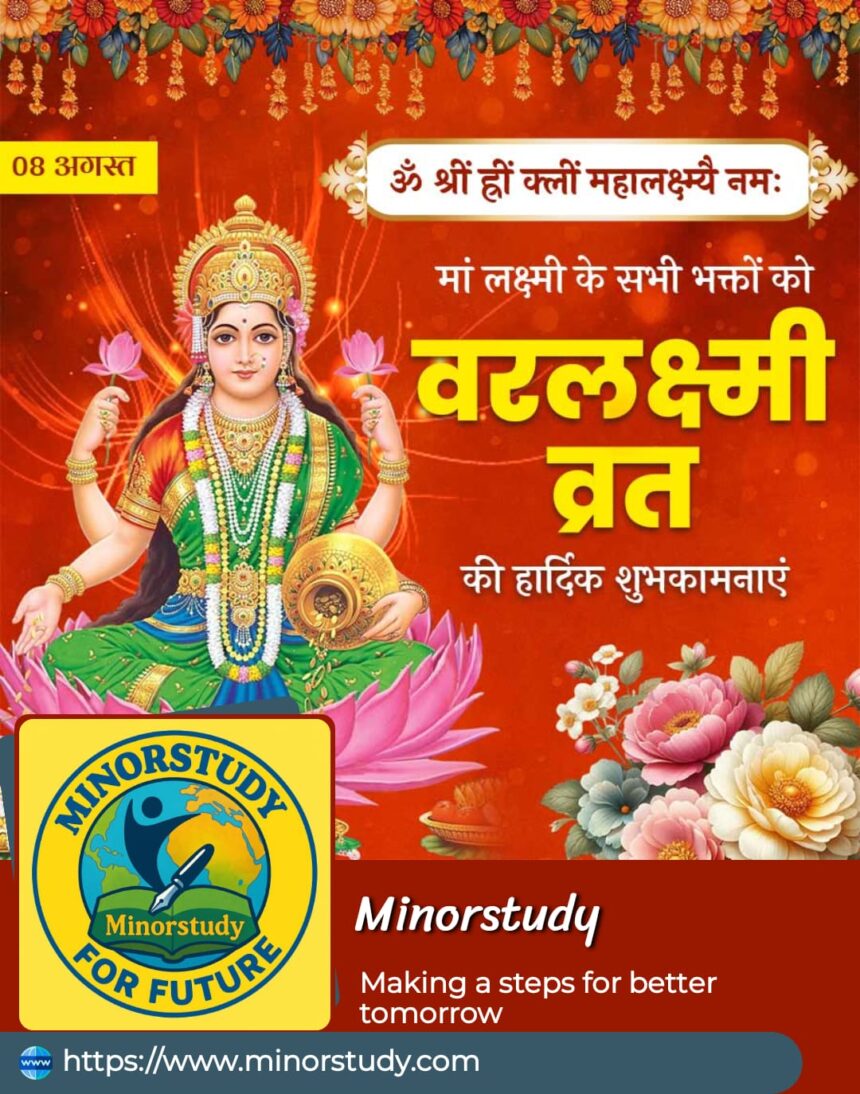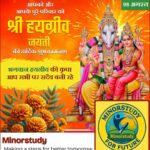Introduction
In the vast spiritual ocean of Sanatan Dharma, certain festivals are considered gateways to divine blessings. Varalakshmi Vrat is one such occasion, deeply rooted in devotion, prosperity, and gratitude. Dedicated to Goddess Lakshmi, the goddess of wealth, fortune, and auspiciousness, this vrat (fast) is observed mainly by married women seeking the well-being of their family, health of their husband, and overall prosperity.
- History of Varalakshmi Vrat
- Facts about Varalakshmi Vrat
- Timeline of Varalakshmi Vrat
- Significance of Varalakshmi Vrat
- Observance of Varalakshmi Vrat – Step-by-Step Rituals
- Wishing Messages for Varalakshmi Vrat
- FAQs about Varalakshmi Vrat
- Important Points to Remember
- Importance of Varalakshmi Vrat in Daily Life
- Conclusion – The Everlasting Blessing
The word “Varalakshmi” itself means “The Goddess who grants boons”, and true to its name, this vrat is believed to bless devotees with not only material wealth but also spiritual abundance.
History of Varalakshmi Vrat
The origins of Varalakshmi Vrat are steeped in Puranic tales. One of the most famous stories comes from the Skanda Purana.
According to legend, once Goddess Parvati asked Lord Shiva about a vrata that could grant long life, health, and prosperity. Lord Shiva narrated the story of Charumati, a devout woman from the ancient city of Magadha. Guided by the goddess in her dream, she observed the Varalakshmi Vrat with full devotion. The next morning, her home was filled with gold, gems, and divine radiance — a testimony to the blessings of the goddess.
Since then, this vrat has been observed by countless women across India, especially in states like Tamil Nadu, Karnataka, Andhra Pradesh, Telangana, and Maharashtra.
Facts about Varalakshmi Vrat
Dedicated to Goddess Mahalakshmi – The consort of Lord Vishnu and harbinger of prosperity.
Observed on the Friday before Raksha Bandhan or Purnima in the Shravan month (July–August).
Primarily followed by married women for the well-being of their husband and family.
Involves elaborate puja rituals with Kalasha Sthapana (pot installation) symbolizing the goddess.
Eight forms of Lakshmi (Ashta Lakshmi) are invoked – wealth, grains, strength, courage, progeny, knowledge, victory, and wealth of success.
Linked with both material and spiritual prosperity.
Includes storytelling tradition – Varalakshmi Vrat Katha is narrated during the puja.
Timeline of Varalakshmi Vrat
| Period / Era | Event / Development |
|---|---|
| Vedic Period | Goddess Lakshmi worship described in Rigveda hymns. |
| Puranic Age | Story of Charumati in Skanda Purana emerges as the foundation. |
| Medieval India | Tradition spreads through South India as part of women’s religious practices. |
| Modern Era | Observed nationwide with regional variations, blending devotion with cultural heritage. |
Significance of Varalakshmi Vrat
The vrat holds spiritual, cultural, and social significance:
Spiritual: It connects devotees to divine energy, promoting gratitude and discipline.
Cultural: It preserves ancient traditions and unites families.
Social: Women invite neighbors for Haldi-Kumkum, fostering community bonds.
Personal: It instills hope, faith, and a sense of empowerment.
Observance of Varalakshmi Vrat – Step-by-Step Rituals
Morning Purification – Women wake early, bathe, and wear traditional attire (often sarees in bright colors like red, yellow, or green).
Puja Setup – Clean the home, especially the puja room; sprinkle holy water.
Kalasha Sthapana – A pot filled with rice, coins, betel leaves, and topped with a coconut is placed on a decorated platform.
Invocation of Goddess – The pot is adorned with turmeric, kumkum, flowers, and mango leaves to represent the goddess.
Varalakshmi Vrat Katha – The sacred story is narrated, reminding everyone of the vrat’s origin.
Offering Naivedyam – Fruits, sweets, and special dishes like payasam or panakam are offered.
Aarti and Prayers – Lamps are lit, mantras are chanted, and aarti is performed.
Tie Sacred Thread – Married women tie a yellow thread on their right hand as a protection charm.
Distribution of Prasadam – Blessings are shared with family, friends, and neighbors.
Wishing Messages for Varalakshmi Vrat
🌸 “May Goddess Lakshmi shower you and your family with prosperity, health, and happiness this Varalakshmi Vrat.”
🌸 “On this auspicious day, may the eight forms of Lakshmi enter your life and bless you forever.”
🌸 “Wishing you divine blessings, peace, and abundance on Varalakshmi Vrat.”
FAQs about Varalakshmi Vrat
Q1: Who can observe Varalakshmi Vrat?
Traditionally, married women observe it, but anyone can perform the vrat for blessings.
Q2: Is fasting compulsory?
Fasting is optional; some devotees eat fruits and milk, while others follow a full fast.
Q3: Can unmarried women participate?
Yes, they can, especially to pray for a good life partner and future prosperity.
Q4: Which form of Lakshmi is worshipped?
Primarily Mahalakshmi, but also her eight forms – Ashta Lakshmi.
Q5: What if someone cannot perform the vrat on the exact date?
It can be done on another auspicious Friday in Shravan month.
Important Points to Remember
Always begin with a clean and pure mind.
The Kalasha symbolizes abundance — handle it respectfully.
Avoid arguments, negativity, or disrespect during the vrat day.
Share your blessings — offering food or charity multiplies the vrat’s merit.
Importance of Varalakshmi Vrat in Daily Life
Varalakshmi Vrat is not just a ritual — it’s a life lesson in gratitude, discipline, and positivity.
Financial Well-being: Inspires mindful wealth management.
Family Unity: Strengthens the emotional bond between members.
Mindfulness: Teaches focus, patience, and a prayerful attitude.
Charity: Encourages sharing wealth with the less fortunate.
Conclusion – The Everlasting Blessing
The Varalakshmi Vrat is more than a day of worship — it’s a tradition that carries centuries of wisdom. It reminds us that wealth is not just gold and silver, but also health, relationships, and inner peace. Observing this vrat keeps one connected to roots, values, and divine energy.
When performed with sincerity, it transforms lives by bringing joy, stability, and prosperity — making the blessings of Goddess Lakshmi an eternal part of the household.








